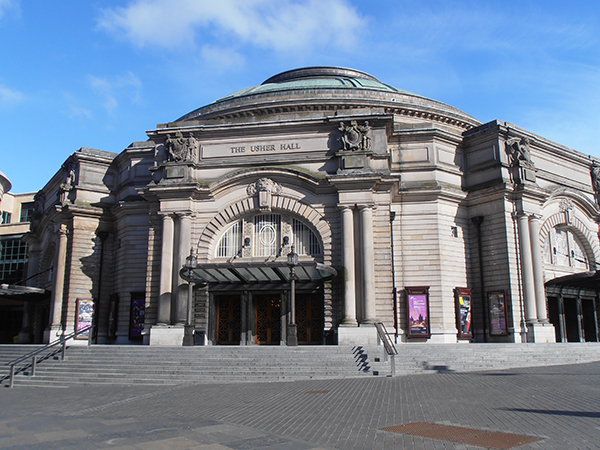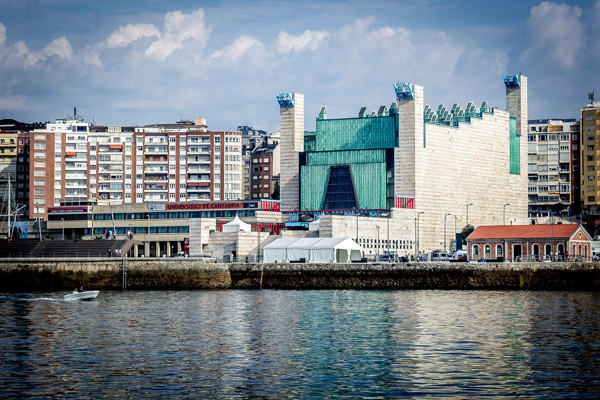As part of the Prague Sounds Festival, and in celebration of the Czech Republic’s EU Presidency this year, the Czech Philharmonic, under Chief Conductor and Music Director, Semyon Bychkov, will appear in a programme of Czech music on a floating stage on the Vltava River in Prague on 2nd September.
They’ll play Dvořák’s Carnival Overture, Smetana’s Vltava and Janáček’s monumental Glagolitic Mass, regarded as one of the most powerful sacred compositions ever created. In this work they’ll be accompanied by soprano Evelina Dobračeva, alto Lucie Hilscherová, tenor Aleš Briscein, bass Jan Martiník and organist Daniela Valtová Kosinová, with the Prague Philharmonic Choir under the direction of choirmaster Lukáš Vasilek.
Antonín Dvořák’s Carnival Overture Op 92 was written in 1891. It’s a high-spirited piece, reflecting the tumult and festivity of a carnival, with barkers, vendors, boisterous crowds and even a gentler passage which Dvořák described as “a pair of straying lovers”. It was originally the second of a trio of concert overtures entitled Nature, Life and Love, premiered in its entirety in Prague in April, 1892, with the composer conducting. Dvořák subsequently separated the three pieces which he renamed In Nature’s Realm, Carnival and Othello.
Bedřich Smetana’s Vltava is the second movement of his symphonic suite, Má vlast (My Country). Depicting the flow of the Vltava River from its source in the mountains of the Bohemian Forest, through the Czech countryside to Prague, Vltava is an intensely patriotic work, celebrating the composer’s love of his homeland. Smetana completed it in 1874 and it was first performed on 4th April the following year, with Adolf Čech conducting the Orchestra of the Prague Provisional Theatre. The entire suite premiered at the Zofín Palace in Prague on 5th November, 1882.
Leoš Janáček began his Glagolitic Mass shortly after his return from a visit to Great Britain in 1926. This cantata for soloists, choir, orchestra and organ began, in 1908, as a Latin setting of the Kyrie, Agnus and Credo for organ and chorus, with words dating from the 9th century as used in church services on 7th July, the feast day of St Cyril and St Methodius. Janáček, an atheist, chose not to use the traditional Latin setting, and instead used an Old Church Slavonic text (though it is actually a hybrid of the extinct language). The name Glagolitic is taken from the original Old Church Slavonic script, and as Janáček was a firm supporter of pan-Slavism, this mass has been viewed as a celebration of Slavic culture. The composer subsequently made a number of alterations to the work, and more were made when it was published after Janáček’s death in 1928.
Prior to this performance in Prague, the Czech Philharmonic, led by Semyon Bychkov, opens a four-centre tour of summer festivals, with two performances in the Usher Hall at the Edinburgh Festival. The tour – which takes place from 20th to 29th August – also takes in appearances at the Église Saint-Jean-Baptiste at the Festival Ravel in Saint Jean de Luz, at the Kursaal as part of the Quincena Musical de San Sebastián, and at the Palacio de Festivales de Cantabria in the Festival Internacional de Santander. The tour programme features Dvořák’s Carnival Overture, Martinů’s Concerto for Two Pianos and Orchestra, Janáćek’s Glagolitic Mass and Mahler’s Symphony No 7.
The soloists in the Glagolitic Mass are supported in Edinburgh by the Edinburgh Festival Chorus (choirmaster Aidan Oliver), in Saint Jean by Orfeón Donostiarra (choirmaster José Antonio Sainz Alfaro), in San Sebastián by the Edinburgh Festival Chorus with choirmaster Aidan Oliver, and in Santander by Orfeón Donostiarra (choirmaster José Antonio Sainz Alfaro).
Bohuslav Martinů’s Concerto for Two Pianos and Orchestra H 292, was written in Switzerland in 1938. Lively and rhythmic, the opening movement is energetic and jazzy, followed by a tranquil slow movement, and the final movement returns to the busy cheerfulness of the first. It’s a concerto well suited to the skills of the internationally renowned pianists Katia and Marielle Labèque – described by the New York Times as “The best piano duo in front of an audience today”.
Gustav Mahler’s Symphony No 7 in E minor is the least known of his symphonies. Depicting a journey from darkness into light, it is sometimes referred to as Song of the Night. Mahler began writing this work in the summer of 1904, composing the second, third and fourth movements first. He experienced difficulty in composing the opening movement, however, and it wasn’t until his arrival at the Wörther See in June 1905 – where he had his summer residence at Maiernigg – that he found the inspiration for which he was searching. As he was being rowed across the lake, with the dipping of the oars into the water “… the introduction (or rather, its rhythm, its atmosphere) came to me”, he was quoted as saying later. The first and fifth movements of the symphony were completed at Maiernigg, and on 19th September, 1908, Mahler led the Czech Philharmonic in the premiere of the Symphony No 7 in Prague.
For further information on the individual programmes, venues and artists, visit the Czech Philharmonic website.
Information sourced from:
Czech Philharmonic programme notes





